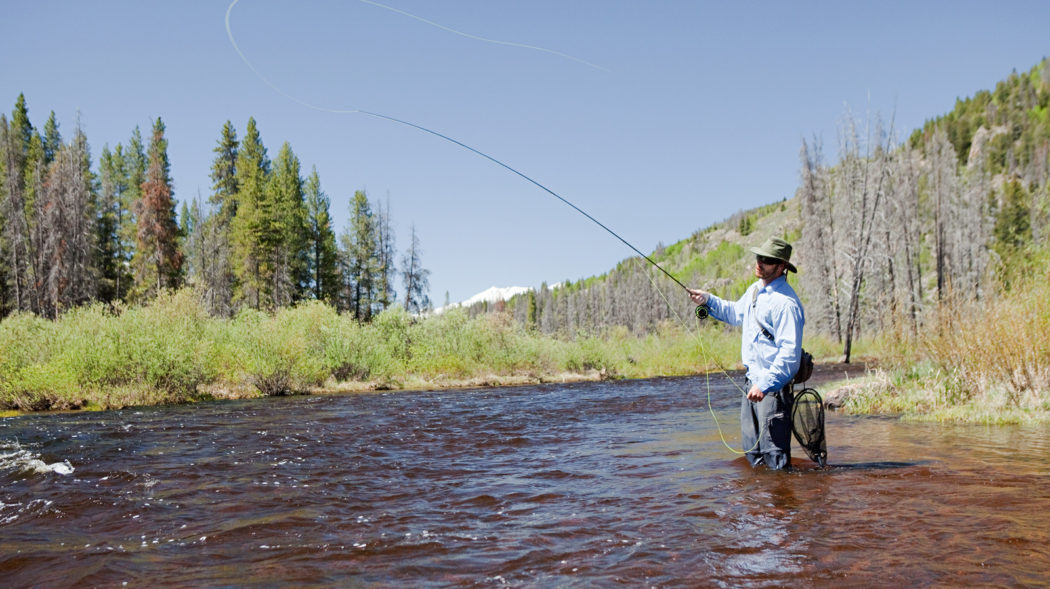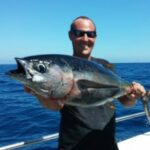Fly Fishing for Pike During The Spawn

Fly fishing for pike is an oddity. The big gear it takes to handle these toothy monsters unnerves some fishermen. But pike in their spawn-season patterns are primed for catching on the fly. Anglers undaunted by the challenges are rewarded with the best fight found in North America’s freshwaters.
There is an ethical debate about if and how one should fish during the spawn. I’ll leave that debate to another time but will generally mention that it’s best to do your research on the particular type of fish you’re going after and whether it’s recommended to fish them in your area.
Here are some tips for the beginner who wants to give it a shot – don your best fly fishing hat, your best fly fishing vest and let’s step into the water.
Pike Spawning Habits and Patterns
When the ice gives way to the grasses and weeds, life and motion stir with the returning sun. As a fly fisherman, I’m idle and bored most of the winter, but pike are just as ready for the change. With the thaw, they’ll start grouping together to spawn. At no better time can a fly be positioned to catch them.
We also have an article here about the best time of the day for northern pike fishing.
Likely Spots for Pike
Pike are lone hunters any other time, but in early spring a female can have several male companions. I look for them in gentle current or still water in streams, and shallow bays of lakes. Marshes are fun because they have the right stuff: calm water and vegetation that pike eggs can stick to.
Weed beds and shallow cover is a good place to deliver a fly. Pike like to ambush their prey and sunbathe near a good hiding spot. I’ll blindly cast to deeper water close by in case any haven’t moved up yet, too.
Pike Spawning Water Temperature
Water 40-50 degrees Fahrenheit is ideal for this fish to start laying eggs. Once it gets to the 60-65 degree range most will have moved deeper to stay cool for the coming summer. This gives a small window, but they move in waves, with the bigger fish usually first to spawn and first to leave an area.
The Right Pike Fly Fishing Rod
The motto most heard in fishing is always to use the lightest tackle you can get away with. But when it comes to fly fishing for pike, there are no shortcuts. Bigger flies catch bigger pike, and 4-foot long pike are not uncommon. A heavier pole has all the advantage when throwing 3-7 or even 8 inch flies with large hooks.
8-10 Weight
An 8 weight is capable, but a 9 or 10 weight rod is most common and practical. Clearing obstructions with my backcast and casting big flies far and accurate are best done, to me, with a 9 ½. Cutting through the wind and proper load-up means the bigger the better.
Pike Flies
Pike flies are usually the biggest and ugliest of the bunch. Some people make it a point to call them lures, and not flies as the 16 or 18 sized ties used when fishing for trout.
Matching the Hatch? Kind Of…
One reason why big fur and feathers might work so well on pike around spawn-time is purely reactionary. Pike can see colors, but not too many finer details. I catch them all over the water column – and surface – with general colors and actions they expect.
Topwater
Shallow pike will readily hit topwater baits, and that’s probably the most exciting way to catch them. I like poppers and gurglers, and use the same approach with them as bass fishing: greens and browns for poppers to imitate frogs; yellow and white gurglers look and sound similar to baby duckling prop baits. A Foam Frog or Foam Mouse always provides the possible catch of a lifetime.
In the Water
A bunny leech is one stripping bait I keep in steady rotation, and variety. The red and white pattern works in most situations. The pike sees an injured fish 4-to 8 inches long, and sporadic strips with long pauses get it to bite.
A Clouser Minnow fished hook up is so important to my tackle box. I can rake it through weed beds to upturn pike holding there no problem. Any hairwing imitative in chartreuse is known for putting the rage into active pike.
Line And Lead for Fly Fishing Pike During Spawn
A weight forward fly line made for throwing around these big lures is a no-brainer. A sinking tip line can work well when lure size is scaled back or casting deep. The bite tippet I use depends on the situation but will be either hard mono, braid, or wire.
Hard Monofilament
Hard Mono is lighter and therefore much easier to cast heavy tackle with all day.
It holds up in the wind and gives me good turnover. It’s also more abrasion-resistant than braid, which is needed for working around logs and rocks. But the potential for pike to bite through it and lose fish and lure is always there.
Braid
Big flies can turnover on a heavy braid tippet. It also floats so I use it a lot for topwater presentations. I use 60 to 80-pound test – its lack of stretch will drive a hook home with gusto. Braid is easily seen by wary fish, so it has more success in murky water. Any nicks in the line compromise it, and I make sure to re-tie after a bite or rough handling.
Wire
If I could use wire all the time I would. The freedom from bite-offs would be liberating. But all the action of a fly is hampered by its stiffness and weight. I still make it work in some circumstances. Low-visibility conditions can hide its faults. Wild pike that have never seen better fall for it sometimes, too.

Other Pike Fly Fishing Tips
Anyone just getting into fly fishing will have their hands full if targeting pike. A few tips might flatten the learning curve.
Casting Techniques
Sight fishing for pike happens. They can be seen holding in clear water soaking up some sun. When that fails, cast to the outside edge of cover first and work in. Focus on holes in mats and weeds, as pike wait below for prey to fall through.
A Few Last Words on Flies
Pike hunt by sight but don’t have that great of it. Gluing a pair of eyes onto a fly, though, gets their attention. Also, there’s not much need for the most life-like and expensive materials. Flies smashed by pike have short lives.
As an Amazon Associate, Fishermen's Angle earns from qualifying purchases. We get commissions for purchases made through links in this post.
